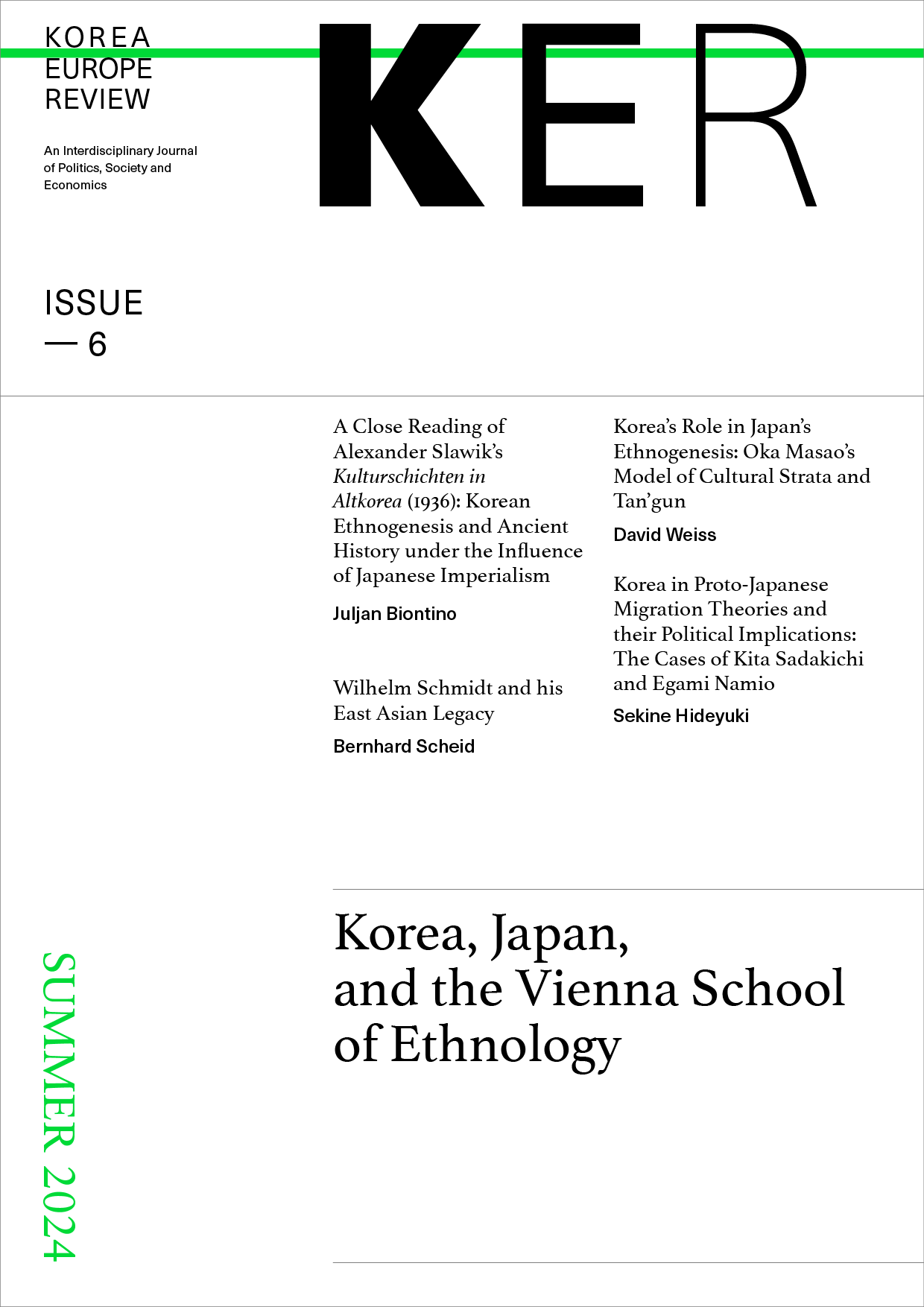Korea in Proto-Japanese Migration Theories and their Political Implications
The Cases of Kita Sadakichi and Egami Namio
DOI:
https://doi.org/10.48770/ker.2024.no6.47Keywords:
Egami Namio, Kita Sadakichi, ethnogenesis, migration, diffusionAbstract
The “horse-rider theory” succeeded the theory of Kita Sadakichi, a proponent of the common ancestry between the Korean and Japanese peoples. His arguments had helped justify Japan’s colonial annexation and assimilation of Korea from 1910 to 1945. Egami Namio, who put forward the horse-rider theory, was reserved about publishing a theory that seemed influenced by imperialism.
This paper examines how such considerations or reservations were reflected in Egami’s theory by comparing it with Kita’s. Both looked for the origin of the Wa, the rice farmers of ancient Japan, in the southern parts of China. Kita assumed that the Wa’s main route of migration to Japan was a land route that went north across the Shandong and Korean peninsulas, finally reaching Kyūshū. Egami argued that the Wa went directly from China to Kyūshū by sea. Moreover, Kita regarded the Wa and the Han, the rice farmers of ancient Korea, as almost the same ethnicity, while Egami distinguished them and interpreted the influence of the Han on the Wa as cultural diffusion rather than the result of ethnic migration. Both concurred in identifying the Tenson group, which ruled ancient Japan, as a branch of the Puyŏ ethnicity. Egami linked them directly to Central Asia, arguing that they reached the Korean peninsula as “horseriders.” In this way, he avoided the genealogical theorization of the relationship between the Koreans and the Japanese.

Downloads
Published
How to Cite
Issue
Section
License
Copyright (c) 2024 Sekine Hideyuki

This work is licensed under a Creative Commons Attribution 4.0 International License.


